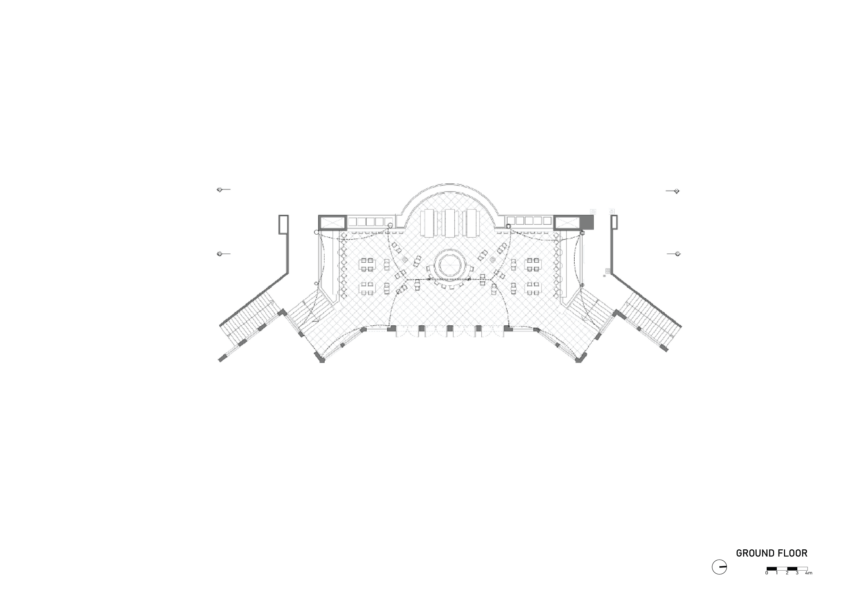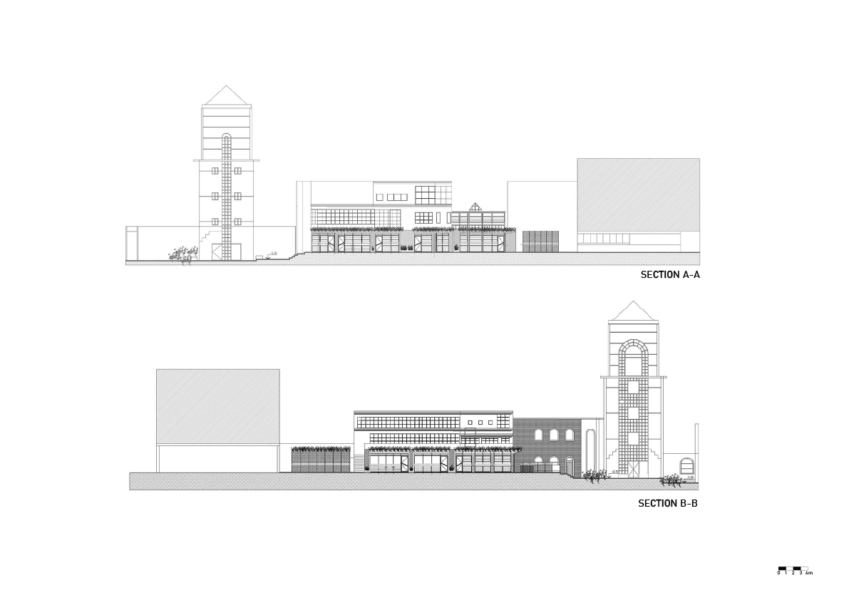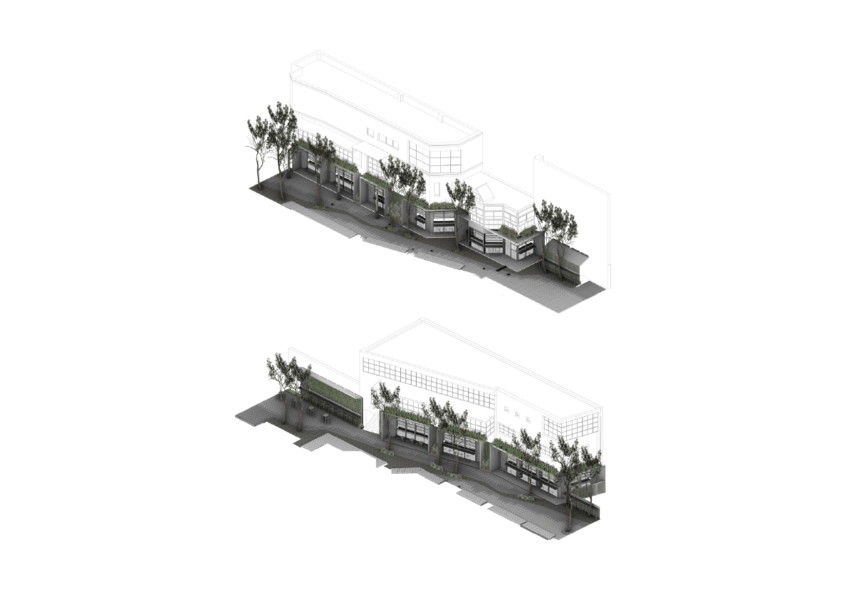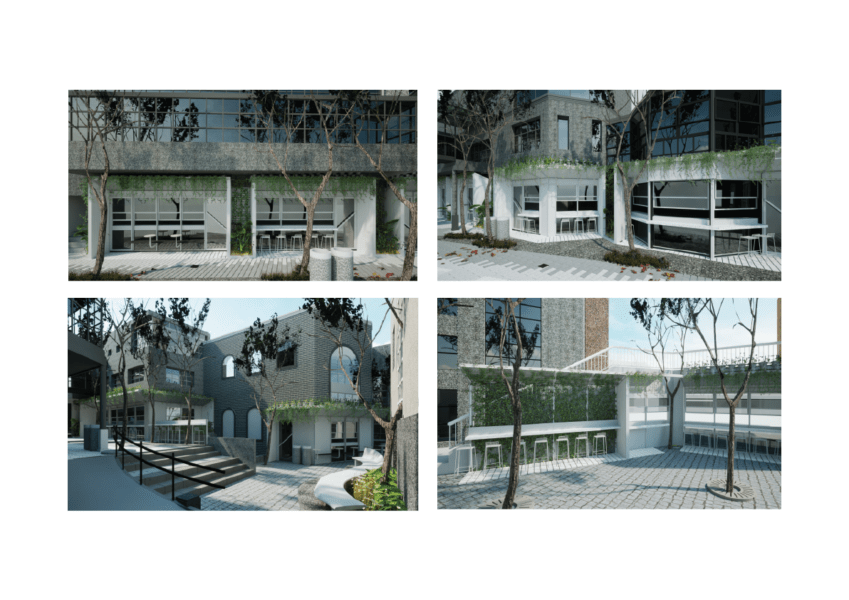The Paseo la Plaza has always captivated us locals for its enigmatic urban space, whose language empathizes with the collective imaginary of the heterogeneous nature of a city, especially one like Buenos Aires.
As its name suggests, the prevailing emptiness, air and vegetation literally illustrate the identity of the square. Its alleys of cobblestones surround the theaters where each building has an identity that clearly emulates an old village. It is in this unique attribute so valued by users and owners that we have analyzed how we can integrate a new identity. An identity that must maintain the “Paseo la Plaza” as the main protagonist and the “Mercado Manduca” as its necessarily integrated market.
This careful integration between both environments is translated into an element that we define with the name of ” metal strip”, one which constitutes the very identity of the market. It is a communication platform in itself and it conveys a contemporary, dynamic and integrated language throughout the entire length of its development. The Manduca plaza within the promenade also makes it a sustainable vegetation proposal.
The strategy has been to maintain the heterogeneity of its buildings in its tectonic and formal aspects while also homogenizing its volumes. To this end, we implemented dark tones so that the building that defines the new use as a market is differentiated not only by its light tones, but also by its tectonics.
The “Paseo de la plaza” walled building type, and the new building called “metal strip” is light and made of metal sheets. This piece rises from the ground level between vegetated flower beds, containing 10 facades of commercial premises designed as windows of the old sidewalk bars. Its furniture in front of the windows is resolved through the same language. Under the same porche language we have defined areas of common use for the complex’s diners, as if it were a natural continuation of the construction system itself.







